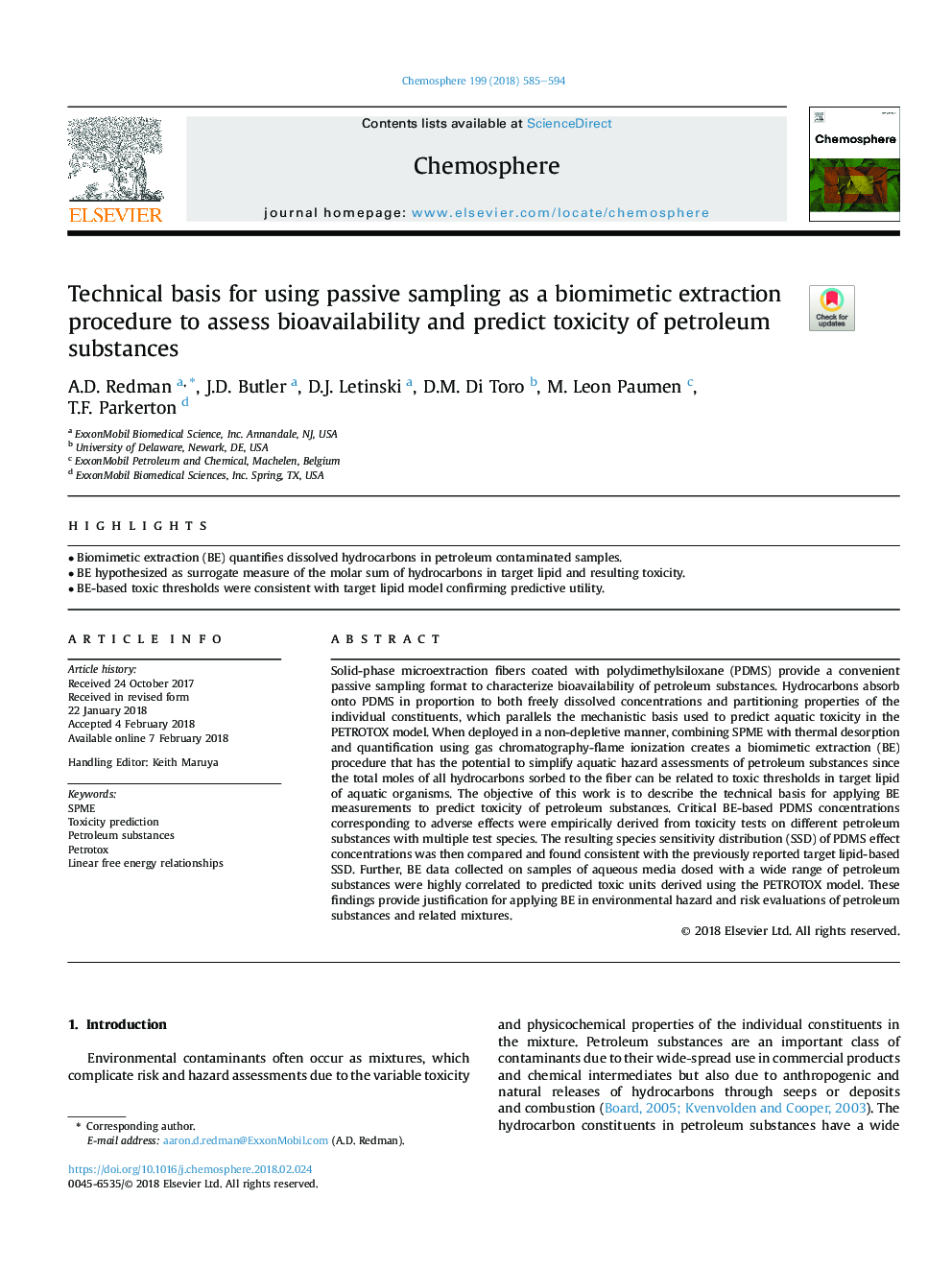| Article ID | Journal | Published Year | Pages | File Type |
|---|---|---|---|---|
| 8851799 | Chemosphere | 2018 | 10 Pages |
Abstract
Solid-phase microextraction fibers coated with polydimethylsiloxane (PDMS) provide a convenient passive sampling format to characterize bioavailability of petroleum substances. Hydrocarbons absorb onto PDMS in proportion to both freely dissolved concentrations and partitioning properties of the individual constituents, which parallels the mechanistic basis used to predict aquatic toxicity in the PETROTOX model. When deployed in a non-depletive manner, combining SPME with thermal desorption and quantification using gas chromatography-flame ionization creates a biomimetic extraction (BE) procedure that has the potential to simplify aquatic hazard assessments of petroleum substances since the total moles of all hydrocarbons sorbed to the fiber can be related to toxic thresholds in target lipid of aquatic organisms. The objective of this work is to describe the technical basis for applying BE measurements to predict toxicity of petroleum substances. Critical BE-based PDMS concentrations corresponding to adverse effects were empirically derived from toxicity tests on different petroleum substances with multiple test species. The resulting species sensitivity distribution (SSD) of PDMS effect concentrations was then compared and found consistent with the previously reported target lipid-based SSD. Further, BE data collected on samples of aqueous media dosed with a wide range of petroleum substances were highly correlated to predicted toxic units derived using the PETROTOX model. These findings provide justification for applying BE in environmental hazard and risk evaluations of petroleum substances and related mixtures.
Related Topics
Life Sciences
Environmental Science
Environmental Chemistry
Authors
A.D. Redman, J.D. Butler, D.J. Letinski, D.M. Di Toro, M. Leon Paumen, T.F. Parkerton,
